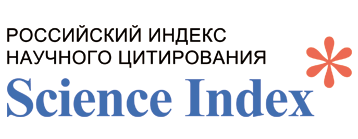THE STUDY OF THE INHIBITORY ABILITY OF INORGANIC ORTHOPHOSPHATE COMPOSITIONS
Keywords:
corrosion, inhibitor, orthophosphate, degree of protection, depth indicatorAbstract
The article deals with the anti-corrosion properties of inorganic orthophosphate compositions in relation to St-3 steel depending on the pH of the medium, the nature and concentration of orthophosphate, the nature of the ion modifier. The studies were conducted according to GOST methods. Methods: gravimetry, potentiometry, photocolorimetry, X and SEM. On the basis of experimental data, quantitative indicators of corrosion process were determined: the rate of corrosion process, the degree of protection, the depth index, the coefficient of inhibition and the assessment of the stability of the formed film on the ball scale of corrosion resistance against steel. The analysis of experimental data allows to establish the influence of the above factors on the corrosion processes in the systems under study. The experimental data are supplemented by thermodynamic calculations of the corrosion process parameters, the results of which correlate well with the kinetic data of the process under study. During the research also the analysis of the corrosion deposits, showing the formation of gidroksiapatit compounds on the metal surface. Corrosion resistance of the formed compounds in these systems on the basis of the calculated values of the deep corrosion index corresponds to 4 points (according to GOST 5272-90). The regularities established during the work contribute to the creation of effective orthophosphate inhibitors with the highest degrees of protection.
References
[1] McCafferty E. Introduction to Corrosion Science . Springer, NewYork, NY, 2010.
[2] Vosta J., Eliasek J. Study on Corrosion Inhibition from Aspect of Quantum Chemistry // Corros. Sci. 11, 223(1971).
[3] Zhuk N.P. Kurs teorii korrozii i zashhity` metallov. M.: Metallurgiya, 1976. 472 p.
[4] Ulig G.G., Revi R.U. Korroziya i bor`ba s nej. Vvedenie v korrozionnuyu nauku i tekhniku / Per. s angl.; pod red. A. M. Sukhotina. L.: Khimiya,1989. 456 p.
[5] Bregman D.I. Ingibitory` korrozii. M.: Khimiya, 1966. 312 p.
[6] Reshetnikov S.M. Ingibitory` kislotnoj korrozii metallov. L.: Khimiya, 1986. 116 p.
[7] Vladimirskaya T.N., Chepeleveczkij M.L. Issledovaniya kompleksoobrazovaniya v sistemakh Fe3+ - Р3О5-10 - H2O и Fe3+ - Р2О4-7 - H2O // V kn.: Khimiya i tekhnologiya kondensirovanny`kh fosfatov. 1989. P. 158-162.
[8] Niyazbekova A.B., Akatyev N.V., Sulekeshova G.K., Shakirov T.A. Chromatographic study of systems cyclotri-, cyclotetra- and cyclohexaphosphate with two and trivalent cations of p- and d-elements // Technology «MATERIALS OF THE VI INTERNATIONAL RESEARCH AND PRACTICE CONFERENCE», Munich, Germany, 2013.
[9] Kuany`sheva G.S., Makasheva G.R., Kamalova G., Niyazbekova A.B. Komplekso-obrazovanie solej nekotory`kh d-e`lementov s difosfat-anionom // Vestnik KazGU. Seriya «Khimiya». Karaganda, 1999. N 1(13). P. 71-73.
[10] Corbridje D.E.C. The structural of chemistry of phosphates // Bull. soc. fr. miner. et. cristallog. 1971. Vol. 94, N 1. P. 271-299.
[11] Zhdanov U.F. Khimiya i tekhnologiya poliformovaniya. M.: Khimiya, 1979. 240 p.
[12] Lazerov A.V., Kubasova L.V., Chudinova N.N. Postupleniya i issledovaniya i fosfaty` shhelochny`kh metallov. 1982. Vy`p. 18, N 9. P. 127-131.
[13] André Durif. The development of cyclophosphate crystal chemistry // Solid State Sciences. 2005. Vol. 7, Iss. 6. P. 760-766.
[14] Pearson R. Hard and soft acids and grounds // Successes of chemistry. 1974. Vol. 15, N 7. P. 1259-1271.
[15] Tananaev I.B., Lavrov A.B., Chudinova N.N. Issledovanie fosfatov. 1988. Vy`p. 33, N 5. P. 2041-2048.
[16] Narayana N., María Rao, Gómez-García R., Kornberg A. Inorganic Polyphosphate: Essential for Growth and Survival // An- nual Review of Biochemistry. 2009. Vol. 78. P. 605-647.
[17] Karapetov M.Kh., Drakin S.I. Obshhaya i neorganicheskaya khimiya. M.: Khimiya, 1981. 428 p.
[18] Genichiro Kura. Hydrolysis reaction of inorganic cyclophosphates at various acid strengths // Polyhedron. 1987. Vol. 6, Iss. 3. P. 531-533.
[19] Kuany`sheva G.S., Dauletkalieva S.S. E`ksperimental`noe i kvantovokhimicheskoe izu-chenie kompleksov zheleza (III) s difosfatom v rastvore // Mater. XXV mezhdunar. Chugaevskoj konf. Po koordinaczionnoj khimii. 2011. P. 337-338.
[20] Niazbekova A., Akatyev N., Mukasheva M., Rakhova A. Quantum- chemical calculations of electronic structure of polyphosphate complexes of manganese, cobalt, copper and zinc // Materials of the international research and practice conference «European Science and Technology». Wiesbaden: Germany, 2012. P. 82-85.

















